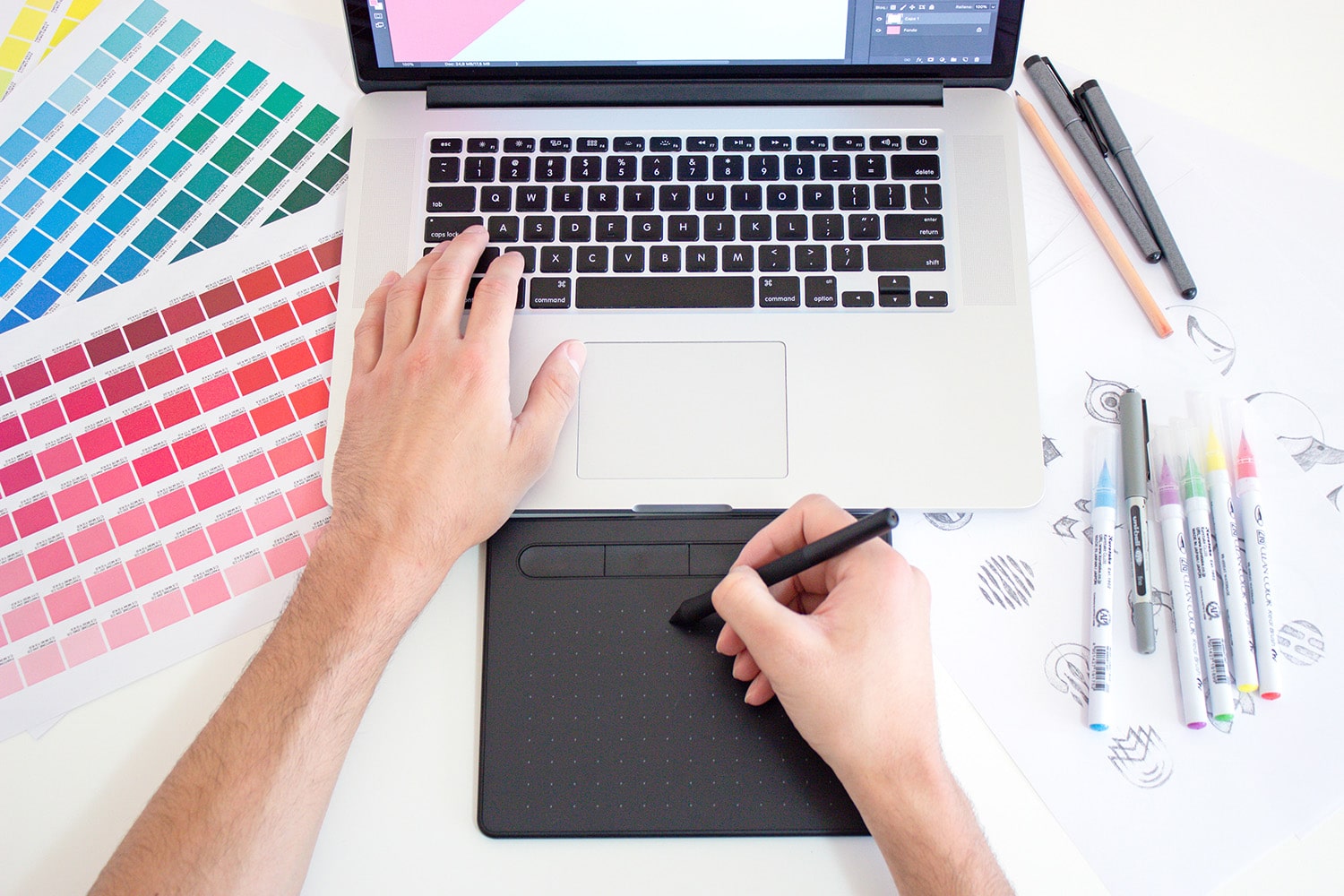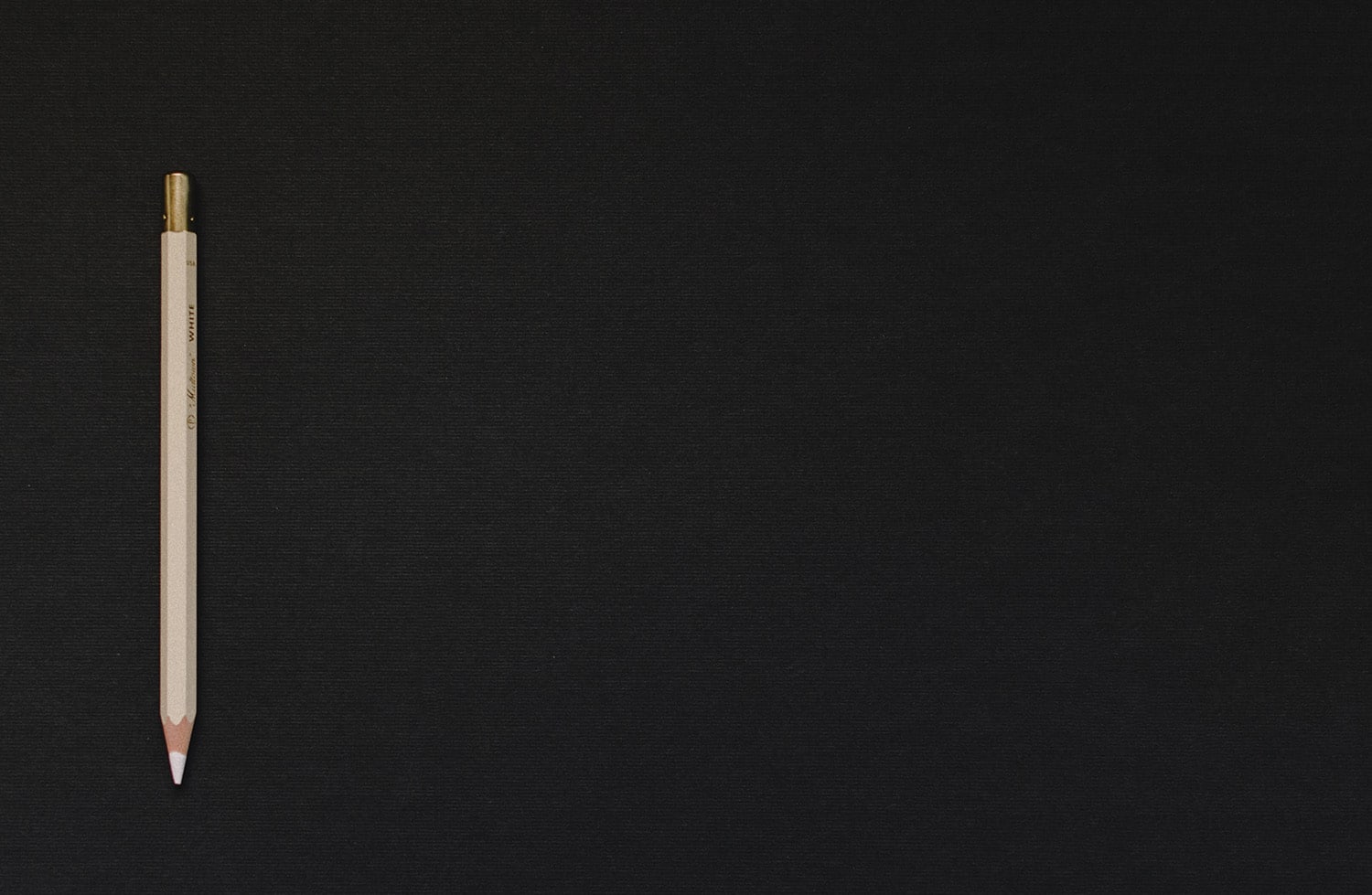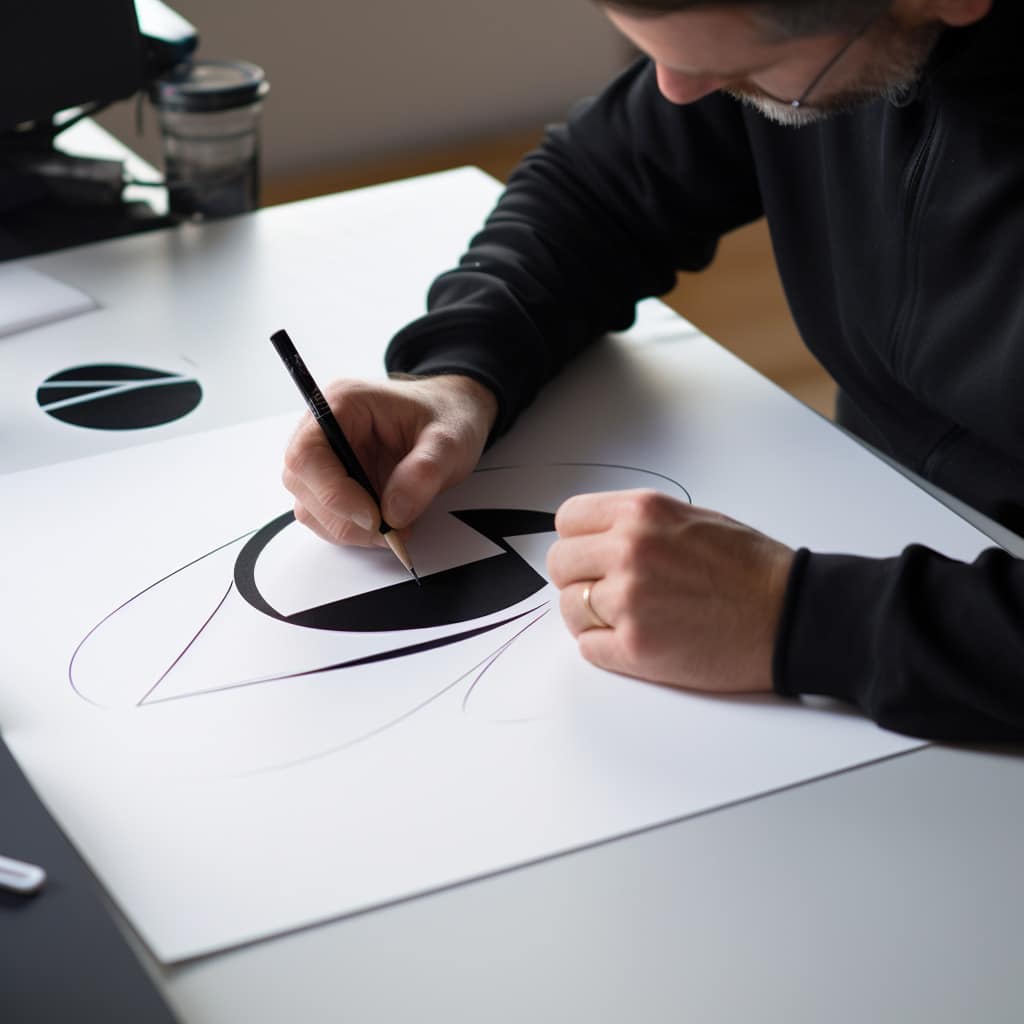Ever caught yourself pausing over a brand because there’s something about it that feels good to look at?
Or maybe a website stayed with you because it felt unusually intuitive and visually addicting.
Good design does more than catch your eye – it speaks to a part of your brain you didn’t know was listening.
Here’s the thing though: it isn’t just the designs themselves that hold our attention; there’s a strategy behind good design. You’re hardly aware of it because all different types of designers work to keep it close to their chests.
Stick with us, and by the end of this article, not only will will unveil this strategy, but you’ll also learn how it’s wielded throughout the world of design, transforming everyday objects and ideas into experiences you’ll never forget.
We’ll even share some advice if you’d like a seat at the design table. Let’s go.
Kicking Off the Show: An Intro to the World of Design
In the sprawling circus of creativity that is design, there are performers of every kind, each with their own unique act. Let’s shine a light on the myriad of designers who shape our world:

Different Types of Designers
- Graphic Designers: These are the visual storytellers. Using images, typography, and space, they craft messages that stick in your mind. Think logos, posters, and those eye-catching ads.
- Fashion Designers: Masters of fabric and form, they dictate the trends you wear. Their canvas is clothing, and their art walks down streets and runways alike.
- Interior Designers: They’re the wizards of spaces, transforming rooms and offices into experiences. Their touch can make a cramped room feel like a palace.
- Industrial Designers: The unsung heroes behind every gadget you can’t live without. These designers blend form and function, making sure that kettle not only looks sleek but feels right in your hand.
- Web Designers: Here’s where art meets the digital age. These designers craft the websites you can’t stop scrolling through – intuitive, stunning, and addictive.
- Product Designers: The behind-the-scenes magicians. From your ergonomic office chair to that sleek smartphone, they’re the reason some products just ‘feel right’.
- UX/UI Designers: They’re the reason you find some apps ‘easy’ and others ‘frustrating’. It’s all about crafting a user experience that’s as intuitive as breathing.
- Motion Graphic Designers: Bringing graphics to life, these designers are why you can’t look away from animated logos and eye-catching video content.
- Environmental Designers: Merging architecture with graphic design, they create spaces that tell stories – museums, exhibitions, and branded environments.
- Types of Designers Everywhere: And there are more, each with their own unique battleground in the design world.
As we dive deeper into this article, our spotlight will zoom in on web design, product design, and their kindred spirits. These are the fields where functionality, aesthetics, and user experience come together in a symphony.
So, if you’ve ever wondered about the different types of designers shaping the digital and physical products we use every day, you’re in for a treat. Let’s pull back the curtain and see how these creators work their magic.
Many Faces: Different Types of Design Run-Through
Before we dive in, let’s take a closer look at some key players in the vast arena of design. While these types of designers were mentioned earlier, each field holds depths and nuances worth exploring to truly grasp the spectrum of creativity they represent.
- Graphic Design
- The realm of graphic design is where art meets purpose. Graphic designers are the alchemists of the visual world, turning ideas into visual statements. Their canvas ranges from digital ads and branding materials to print media and packaging. These types of designers don’t just make things look pretty; they make them communicate, provoke, and persuade.
- Fashion Design
- Fashion design is more than just clothes; it’s a cultural heartbeat. Fashion designers are the trendsetters and storytellers, weaving narratives through fabrics and silhouettes. They challenge norms, reflect societal changes, and often dictate what will be the next big thing in the world of apparel. Their work is seen on runways, in streets, and everywhere in between.
- Interior Design
- Interior design goes beyond decorating. It’s about creating spaces that enhance human experience. Interior designers are the maestros of ambiance, skilled in the art of making spaces functional, safe, and aesthetically pleasing. From homes to corporate spaces, they shape the environments where life happens.
- Industrial Design
- Industrial design is the silent influencer in our everyday lives. These types of designers blend art, science, and technology to create products that are both functional and appealing. Think of the sleek design of your smartphone or the ergonomic curve of a car seat – that’s industrial design at work, impacting everything from consumer goods to medical equipment.
- Others
- Then there are the unsung heroes in the other different types of design. UI/UX designers, who make our digital interactions seamless and intuitive; motion graphic designers, who bring static images to life with animation; and environmental designers, who craft experiences in physical spaces like museums and public installations. Each of these types of designers plays a pivotal role in shaping our visual and experiential landscape.

In this kaleidoscope of creativity, different types of designers bring a unique set of skills and perspectives to the table, constantly pushing the boundaries of what design can achieve.
Zooming in on Web and Product Design
Web Design
It’s not just about making a site look pretty; it’s a chess game of strategy and user psychology. Web design involves crafting an online presence that’s not only visually appealing but also user-friendly and responsive across devices.
This is where UI/UX designers play a pivotal role, focusing on the user’s journey to create intuitive and engaging experiences. The aesthetics need to align seamlessly with functionality, making every click and scroll part of a larger, cohesive story.
It’s a world where types of designers collaborate to balance art and efficiency.
Product Design
Imagine the journey from a sketch on a napkin to the product in your hand. Product design is that journey. It’s a meticulous process that involves understanding user needs, conceptualizing solutions, and then bringing those concepts to life.
Here, functionality, usability, and aesthetics aren’t just buzzwords; they’re the pillars of the design process.
Product designers are the bridge between an idea and its tangible incarnation, ensuring that every aspect of the product serves a purpose and enhances the user experience.
They are the types of designers who turn ‘good’ into ‘can’t live without.’
Graphic Design in Web and Product Contexts
Think of graphic design as the secret sauce in both web and product design. It’s the visual language that communicates brand identity and message.
In web design, graphic elements create an immersive environment, guiding users’ eyes and emotions as they navigate a site.
In product design, these elements define a product’s aesthetic appeal and user interaction. It’s the subtlety of a font, the psychology of a color palette, and the placement of a button that can make or break a user’s experience.
These designers don’t just decorate; they communicate and elevate the entire user journey.
In this close-up look, it’s clear that the types of designers involved in web and product design are not just creating; they’re engineering experiences, emotions, and interactions. They’re the unsung heroes behind the screens and the products that shape our daily lives.
Compare and Contrast: The Different Types of Design

Graphic Design vs. Web Design
Graphic design is the old-school rebel, playing with visuals in a static world of posters and logos.
Web design is its tech-savvy sibling, bringing those visuals to life on-screen.
While both types of designers speak the language of color and form, web designers also juggle user interaction, adapting their art to clicks and scrolls. Where graphic design ends with the print, web design begins with the user experience.
Fashion Design vs. Product Design
Fashion design struts its stuff on the runway, a world where aesthetics reign supreme.
Product design, on the other hand, is like the practical cousin, focused on functionality and user interaction.
Both fields require a keen eye for aesthetics, but while fashion designers drape the human body, product designers shape the user’s environment, from the ergonomic feel of a chair to the sleek design of a smartphone.
Interior Design vs. Environmental Design
Interior design is the art of personal spaces, turning homes and offices into reflections of their occupants.
Environmental design takes this concept public, creating experiences in communal spaces like parks and museums.
Both types of designers sculpt the user’s environment, but while interior designers focus on personal comfort and style, environmental designers engage with broader social and cultural narratives.
Industrial Design vs. Web Design
Industrial design is hands-on, concerned with the tangible feel and functionality of products. Web design, in contrast, lives in the digital realm, where the product is the website itself.
Both disciplines require an understanding of the user’s needs, but while industrial designers manipulate physical materials, web designers manipulate digital interfaces and experiences.
Intersection of Design
The intersection of these various types of designers creates a dynamic battleground. Web and product design often overlap in their focus on user experience and functionality, yet they diverge in their mediums and end goals. Each discipline, with its unique challenges and perspectives, contributes to the rich tapestry of the design world.
When Design Worlds Collide: The Overlaps
In the universe of design, the lines are not just blurred—they’re often non-existent. The worlds of web, product, and graphic design don’t just coexist; they feed off each other, creating a fusion of creativity that’s greater than the sum of its parts. But how exactly do these different types of designs interact and influence each other? Let’s dive into the overlaps and explore the interdisciplinary nature of design with real-world examples and thought-provoking questions.
Web Design Meets Graphic Design
- Consider a website’s layout:
- the typography
- icons, and
- images
That’s graphic design in digital armor. It’s about translating a brand’s visual identity into a user-friendly web experience.
Ever noticed how the best websites seem to communicate their message almost subliminally? That’s the power of graphic design elements woven seamlessly into web design.
- Case Study: Look at Apple’s website. It’s a masterclass in using graphic design principles like minimalism and typography to enhance user experience.

Product Design Merges with Graphic Design
Think about the last product you loved not just for its functionality, but for its look and feel. Chances are, graphic design played a key role in its appeal.
From the color scheme of a smartphone to the layout of a control panel, graphic design elements are integral in making products user-friendly and visually appealing.
- Case Study: LMNT‘s approach to packaging design is a perfect example of how graphic design principles can elevate a product’s appeal. Their use of bold colors, clear typography, and appealing graphics makes the product both functional and aesthetically pleasing, showing the power of design in creating a compelling brand experience.
Web and Product Design: A Symbiotic Relationship
Web and product design often work hand in hand, especially in tech products. The user interface of a software application is a product in its digital form. How it interacts with the user, its layout, and its ease of use are all shaped by both web and product design principles.
- Case Study: Consider how Fitbit designs both its physical fitness trackers and its accompanying app. The consistency in design across both platforms offers a seamless user experience.
Quiz: Which Type of Designer Are You?
- Do you find yourself obsessing over fonts and color palettes? (Graphic Design Tendencies)
- Are you constantly thinking about how people interact with websites and apps? (Web Design Tendencies)
- Does the thought of creating a product from scratch, considering both its functionality and aesthetics, excite you? (Product Design Tendencies)
The collaboration between these different types of designers isn’t just about making things look good—it’s about creating experiences that resonate on a deeper level. It’s where form meets function, where aesthetics meet user experience, and where the magic of design really happens.
The Real Deal: Carving Your Path in the Design Jungle
In the world of design, the traditional path isn’t always the only path. Whether you’re eyeing a career in web or product design, there are multiple roads to success. Here are some pragmatic tips and insights for aspiring designers, focusing on skill development, portfolio building, and tapping into emerging trends.

Skill Development for Web and Product Designers
- In the realms of web and product design, your skill set is your arsenal.
- Prioritize learning design tools like:
- Adobe Suite
- Sketch, or
- Figma
Embrace the world of AI and how it’s revolutionizing design processes. Understand the basics of user experience, even if you’re not a coder. Stay curious and always experiment.
Building a Portfolio That Speaks Volumes
Your portfolio is your visual resume.
Showcase projects that highlight your:
- creativity
- problem-solving skills, and
- understanding the unity principle of design
Include personal projects or redesigns of existing products/websites to show your initiative and vision. Remember, quality trumps quantity.
Navigating the Career Landscape
From freelance gigs to in-house roles at startups or large corporations, the types of designers who succeed are those who adapt and evolve.
Network relentlessly, both online and offline.
Use social media platforms like:
- Behance, and
to showcase your work and connect with potential clients or employers.
Emerging Trends and Opportunities
- Stay ahead of the curve by keeping an eye on emerging trends. Think sustainable branding or design, AR/VR experiences in web design, and user-centered product design. Explore how AI and machine learning can enhance user experiences and open new creative avenues.

Q&A for Aspiring Designers
Q: Do I need to be an expert in coding for web design?
A: Not necessarily. While understanding the basics can be helpful, focus on the design aspect and collaborate with developers for more complex coding.
Q: How important is formal education in design?
A: While formal education can provide a foundation, many successful designers are self-taught or have learned through online courses, workshops, and real-world experience.
Q: What’s one piece of advice for someone starting in design?
A: Be bold in your creativity, be relentless in your learning, and don’t be afraid to break the rules. The design world respects originality and guts.
In this design jungle, the rules are not set in stone. It’s a dynamic field where adaptability, continuous learning, and a strong portfolio can open doors to exciting opportunities.
A Straight-Talking Conclusion on the Future of Design
Wrapping up, it’s clear that the design world is not just a playground of creativity, but a battleground of innovation. Understanding the different types of designers – from the graphic maestros to the web wizards and product pioneers – is not just about appreciating art; it’s about grasping the future.
In the spotlight, web and product design stand as beacons of what’s possible. These aren’t just fields; they’re frontiers. They offer a canvas for those who dare to blend aesthetics with functionality, creating experiences that resonate on a human level.
So, what’s next for you, dear reader? The different types of designers in the design world is vast, and your journey is just beginning. Whether you’re dipping your toes or diving in headfirst, remember: this is a realm where rules are questioned, boundaries are pushed, and the only limit is your own imagination.
Keep exploring, keep questioning, and above all, keep creating. The future of design is an unwritten story, and you might just be the one to pen its next chapter.






